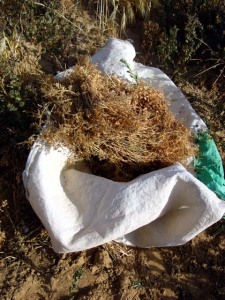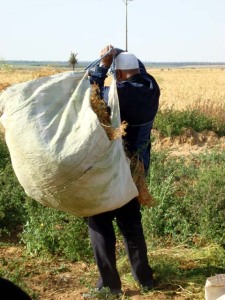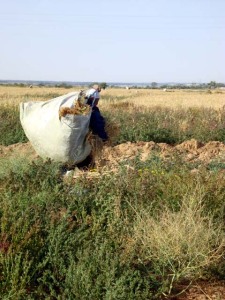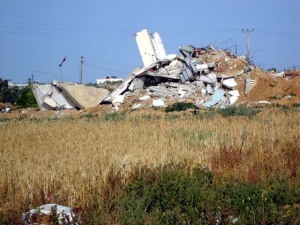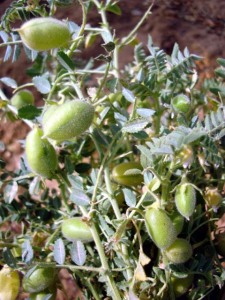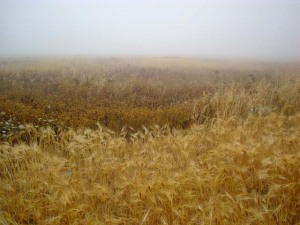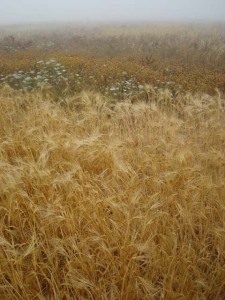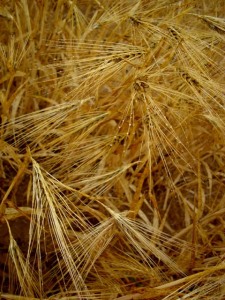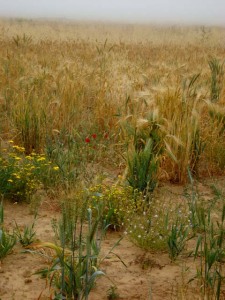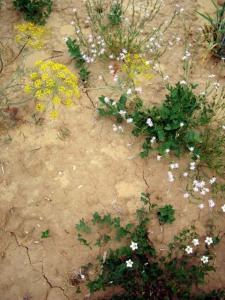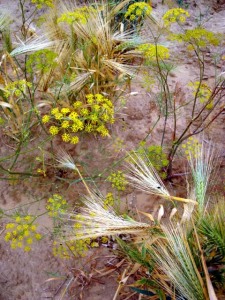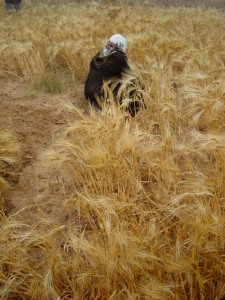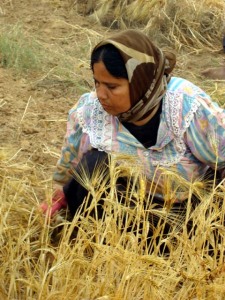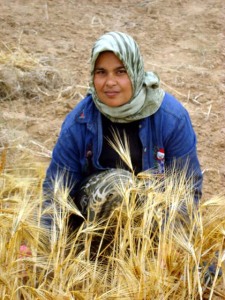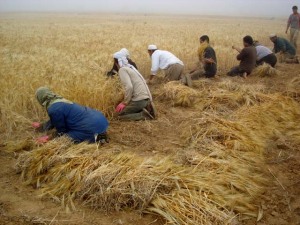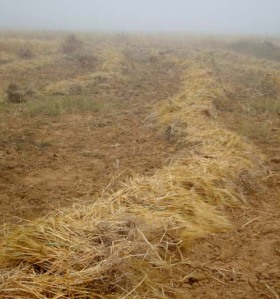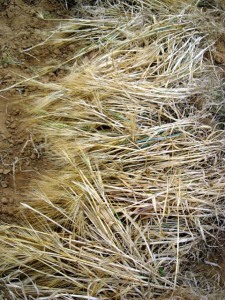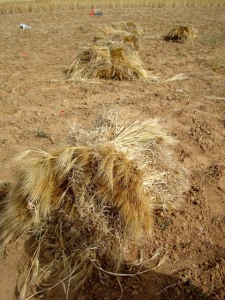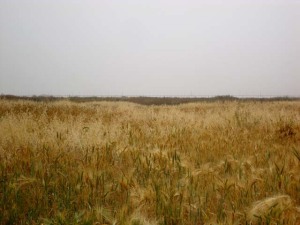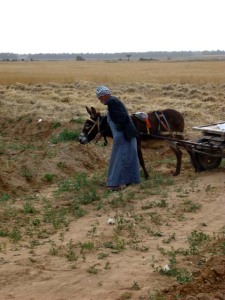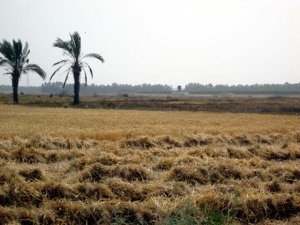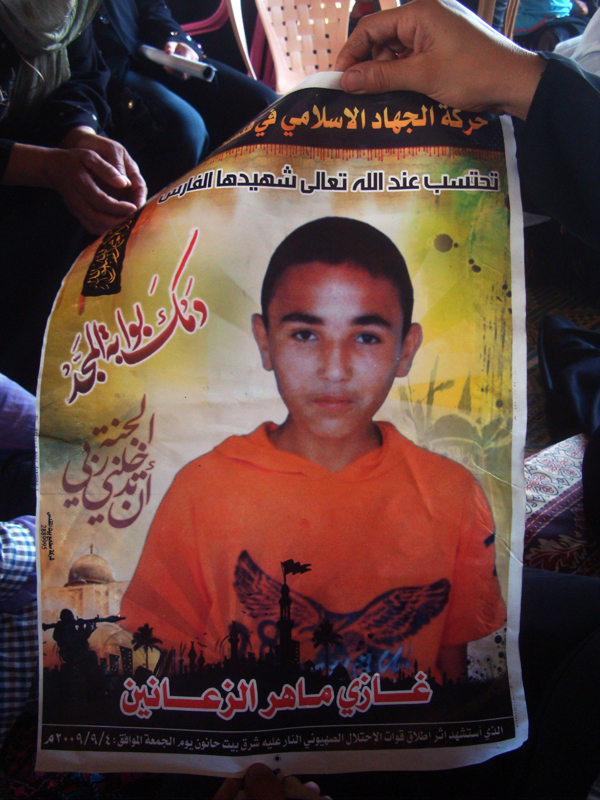Filed under: Uncategorized
April 12: Khoza’a farming:
On a lovely, balmy day in southeastern Gaza, the breeze carries the delicious scent of new blossoms, birds bob as they fly, all is nearly-idyllic.
Fawzi, 13, is helping his mother, 5 other women, and 2 other men harvest lentils. He is a quiet and serious worker, intent on his task. I recall my own childhood of incomparable freedom and safety. I bore no responsibilities, and certainly never had to worry about being sniped while helping with any household chores.
Fawzi keeps his steady steam as the 2 Israeli snipers on a hilltop a few hundred metres away remained focused on the farmers in front of them. The Israeli military jeeps which patrol the border stop for long periods, observing the farmers. It was during one of these stops that the 2 snipers scurried up the low dirt mound to take position with their guns.
The farmers, including Fawzi, have little option but to continue their swift harvest: for some it is their income, for some their produce. But they’ve all been subject to Israeli soldiers’ firing in the same circumstances, and so are wary of the sniping that could break out at any second. Although the setting is near-idyllic, reality dictates a worried, frenzied harvest.
An Israeli military tower some hundred metres beyond in a different direction has opened its dome, sprouting a camera and unseen gun. Shots are being fired further south along the border, and its not possible to know whether they are coming from this tower or soldiers further along the fence.
To our west are the ruins of a house where farmers shared tea with us before Israel’s war on Gaza. To our south is a school routinely subject to the same Israeli soldiers’ terrorizing. The students, we have been told, are often unable to complete a day of classes, interrupted by the shooting at or near the school.
The farmers are working together, harvesting one field and moving to the next. We move from lentils, past a clump of chickpea plants (where I see my first fresh chickpea, key to a staple food, hummous), beyond fields of wheat and rye nearly ready for harvest, and onto another field of lentils.
The day is without incident, aside from the unease of being in snipers’ scopes, and the farmers leave, hauling the lentil stocks in plastic sheets and sacks to waiting donkey carts.
April 13: al Faraheen, east of Khan Younis
It is a foggy morning. As we drive up to the fields around 7 am, the fog has not lifted. The rye, wheat, dill, and random wildflowers glow brilliantly in the light cast by the thick fog. It’s not possible to see beyond 10 metres, though this clears a little after some time. We’ve walked south and east from a farm just under 500 metres from the border, so we know that we are potentially closer. Still, for the next 2 hours we cannot define where the border fence is, nor exactly from where to expect Israeli gunfire.
The farmers are working faster than any I’ve yet seen, gathering in clumps, with gloved or bare hands, the rough stalks of rye with such ease the plant seems like grass, not a hearty grain. The rye makes a loud crunching noise as it is felled. The farmers lay it in neat rows behind them, and if I hadn’t seen the harvest myself, I’d think the rows were the work of a machine.
They continue at this quick pace until the plot is harvested, rye piled and bundled and loaded onto a waiting horse cart. The fog has cleared enough to finally make out the line of the border fence, roughly 350 metres away. No jeeps were seen or heard for those few hours, and while harvesting in the murky fog was more nerve-wracking, the workers are relieved to have collected what they did.
*stalks of wheat and rye
April 14: Lataamat, east of Khan Younis
“We’ve tried to harvest our rye for the last 4 days,” says Latifa Abu Taima(52). “Everytime we’ve come here, the Israelis have shot at us. There are 22 children in my family, with my children’s children. How are we supposed to feed them when we can’t work our land?”
It’s another successful harvest, though not without threat. Two Israeli jeeps, after watching from the border fence road, decide to pull up onto two dirt mounds on either side of the Israeli military tower. The jeeps remain perched there for the duration of our harvest. As with when the jeeps parked directly across from us for a period of nearly 30 minutes, there is little to do but continue to harvest, knowing that we are clearly, visibly unarmed civilians, and that the soldiers can see this.
Some of these women have not worked since the month before, meaning their income for the last 2 months has been a staggeringly meagre 40 shekels (~$ 10), on which they’ve had to help support large families.


